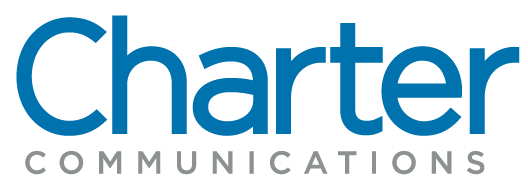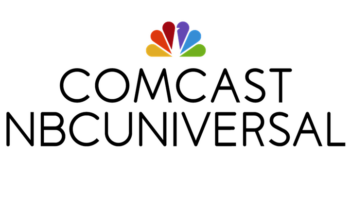The WICT Network hosted another impactful webinar as part of our Beyond the Hashtag Learning Series (sponsored by Cox Communications). The WICT Network’s #BeyondTheHashtag Learning Series, established in the wake of #MeToo and #TimesUp movements, seeks to present real-world solutions by moving workplaces from dialog to action in an effort to build inclusive and equitable workplace cultures that end bias, bigotry and prejudice.
In this session titled, “Inclusion Means Action,” The WICT Network was joined by an esteemed panel of disability inclusion experts from our partner organizations. Crosby Cromwell, Chief Partnerships Officer from The Valuable 500, was our moderator, and was joined by the following guest speakers: Dr. Joanna Abeyie, MBE, BBC, Jennifer Earnest, Cox Communications and Dominic King, Accenture Research. Together, they participated in a discussion to share the steps companies are pursuing to promote policies that create welcoming workplaces.
The webinar began with an overview of the Zoom resources available for our nearly 200 participants—such as the closed captions available for individuals to enable throughout the talk. Once the panelists introduced themselves using their audio descriptions; Dominic King (or Dom), presented the findings conducted by Accenture’s report, “Getting to Equal 2020.”
In this report, Dom shared the stocking statistics found in the workplace— that outlines the lack of trust and transparency employees face in disclosing their disability to their executives and team members. In fact, 76% of employees are not fully open about their disability (80% of executives are not fully open about their disability). This means that only 20% of employees are fully open with their disability.
This leaves the question: why are so many employees not disclosing their disability in the workplace? The answer is tricky. Many employees are more afraid to raise sensitive issues to executives than is expected. There lies the “perception gap,” which is the notion that 67% of executives believe that they are creating environments in which disabilities thrive, while only 41% of employees agree.
Despite the grim statistics, Dom shared eight factors that positively correlate to employees thriving in the workplace. The factors needed to improve disability engagement are: parental leave, mental wellbeing initiatives, fair pay, flexibility, employee resource groups, role models, training available and relevant, and, lastly, freedom to innovate.
With these eight factors, it is proposed that employee engagement, belonging and confidence will be 1.5 times higher, and career satisfaction will be 2.5 times higher. Not to mention, applying these factors will improve the likelihood of growing sales and profits within organizations.
With the Accenture information processing in the participants’ minds, Crosby Cromwell began the guided discussion amongst the panelists.
“Individuals with disabilities are one of the largest minority groups,” said Jennifer Earnest. “When I began my work in disability inclusion, I never would have thought I’d personally be affected. That all changed in 2019 when my son was diagnosed with a rare cancer. He had to have ten inches of his leg removed, amongst other health issues that he continues to experience to this day.”
Dr. Joanna Abeyie emphasized Jennifer’s point. “These things can affect us at any point. HR should think about these things from a human perspective, rather than an operational perspective. We can become a part of that disability inclusion ‘group’ at any time.”
Jessie Wusthoff agreed. “The biggest risk is acting without informing…the word disability doesn’t mean anything, because it means everything. Representation is so important for organizations to take part in; having the conversation, listening and learning are all part of actionable progress.”
Jennifer described the initiatives her company, Cox Communications, is taking to improve disability inclusion. “Accessibility is the catalyst for inclusion. Assisted technology, such as assisted readers and other screen resources are just one step in providing the tools necessary for inclusion. What I love about accessibility is there is no competition. All companies are working together to achieve these goals.”
Dom chimed in, “The human stories that I’ve heard, stand behind the difficulties that many face when it comes to exclusion in the workplace. One individual was afraid that sharing their disability would get them fired. Another individual was afraid to label their disability, despite needing necessary accessibility equipment for their role.”
Dom shared that it’s not only employees that are struggling to define themselves. “One boss was afraid to ‘overstretch’ their employee, and as a result, did not assign enough challenging tasks for them to complete.”
“This was an unconscious act for the boss,” Dom explains. “Instead of having a conversation with their employee, such as trying to understand their disability better, they made assumptions about their limitations with work.”
These assumptions are driven by a lack of meaningful conversations amongst the word “disability,” many of the panelists agreed.
“Many people are afraid to admit their confusion about disabilities, at the risk of ‘being wrong’ or offending someone,” Jessie said.
Joanna agreed and took it one step further: “Individuals experiencing these inequities should not be the ones driving this change.”
As the discussion came to a close, Crosby asked for any final remarks.
“I don’t want it [disability inclusion] to be a fad, or project,” said Jennifer. “Your work is never done with disability inclusion.”
Crosby agreed: “The only wrong thing to do is to do nothing.”
The WICT Network recognizes the passing of American disability rights activist, Judy Heumann, March 4. Judy was recognized internationally as a leader in the disability community and contributed to the global reach of the independent living movement.
****
Participants were provided with a follow-up email after the session with a list of resources mentioned during the webinar. To watch this session, and other inspiring webinars we’ve hosted, please visit our Online Learning Library.
Article published: March 30, 2023




